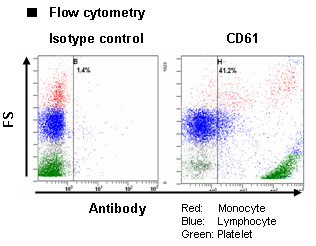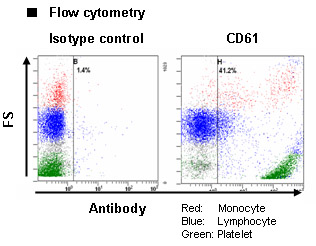Anti-CD61 (GPIIIa) (Human) mAb
Product Code:
MBL-D281-3
MBL-D281-3
Host Type:
Mouse
Mouse
Antibody Isotype:
IgG1 κ
IgG1 κ
Antibody Clonality:
Monoclonal
Monoclonal
Antibody Clone:
T74
T74
Regulatory Status:
RUO
RUO
Target Species:
Human
Human
Application:
Flow Cytometry
Flow Cytometry
Shipping:
4°C
4°C
Storage:
-20°C
-20°C
No additional charges, what you see is what you pay! *
| Code | Size | Price |
|---|
| MBL-D281-3 | 100 ul | £296.00 |
Quantity:
Prices exclude any Taxes / VAT




